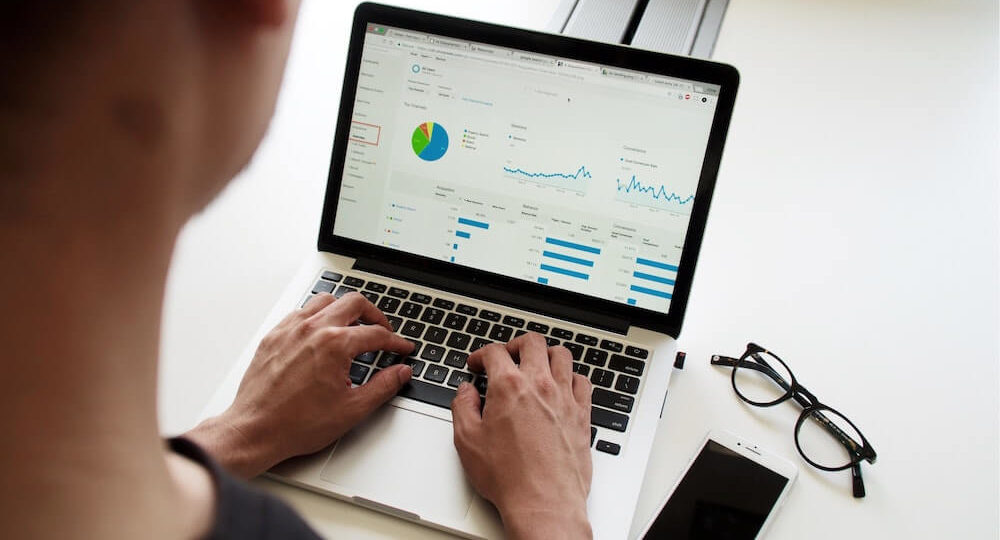Google Ads is a constantly evolving digital platform. With 2019 drawing to a close, we are bringing you tips straight from performance media experts to help you step up your game and rejuvenate your performance media strategy in 2020.
We’ve rounded up the best in our agency, bringing you their performance media expertise. We asked them the question:
How can digital marketers increase conversions in Google Ads in 2020?
Read on for ways to improve the performance of your Google Ads strategy.

Hadrien Brassens Director & Co-Founder Hadrien Brassens on LinkedIn
Over the last couple of years, we’ve seen a diversification in marketing channels, ad formats and features and 2020 is set to continue on this trajectory. Historically, digital marketing worked in silos, with PPC activity here, SEO activity there, a bit of social media on the side sprinkled with some display advertising on top. They all served their purpose, fulfilling their own objectives.
That worked for a while but the lines between each channel are getting blurry and the customer conversion journey is becoming more complex. The need for integration and accurate cross-channel tracking is primordial. Slowly but surely, a new picture is being painted, one that is becoming sharper as time goes by.
With that in mind, I believe 2020 will be the year where marketers will be increasingly aware of what the digital landscape has to offer and how everything is working together as one omnichannel ecosystem. Understanding the relationships between each marketing channel will enable more clever strategies, a clearer understanding of ROI and – let’s not forget – a better experience for the end-users.
Google Ads and Bing Ads, by nature, will remain some of the most effective channels to drive qualified clicks. However, paid search traffic needs to be supported by display, remarketing and retargeting ads, social ads, etc and drive traffic to highly-relevant landing pages designed to convert prospects into customers. If you ask me, Paid Search and CRO are a complementary match made in heaven. If by 2020, you are still not optimising your landing pages or website for conversions, I can confidently say that you are missing out on sales.

Chris Redshaw Director & Co-Founder Chris Redshaw on LinkedIn
Combine Google Ads with Conversion Rate Optimisation.
Google Ads can create the opportunity for conversion but it’s the landing page and on-site experience that happens after the click that decides whether it occurs.
Industry-wide, few advertisers are happy with their conversion rates and most recognise fixable problems on their own websites. Even still, getting these conversion issues rectified is too often deprioritised for other initiatives. I think this is a mistake, and that as Google Ads costs rise, Conversion Rate Optimisation will be a mandatory companion.

Scott Pittman General manager Scott Pittman on LinkedIn
If we’re talking conversions, the thing that I believe has the potential for the greatest impact isn’t anything to do with the Google Ads account. It’s effective conversion optimisation.
Assuming you’re at least ‘good’ at managing Google Ads and your account is running reasonably well, turning your attention to improving the conversion rate of the landing page could yield significantly greater performance than any improvements in optimisation, structure, ads or technology.

Michael Attard Data & Performance Team Lead Michael Attard on LinkedIn
In order to get the most out of their Google Ads activity, advertisers need to ensure that their data is accurate and tracking is correctly set up, ensuring all important user actions are tracked. Once this is in place, we are able to leverage Google’s powerful machine learning algorithms to optimise toward users who are more likely to convert. This strategy should be used in conjunction with a robust audience targeting strategy and keyword list in order to engage with users at all stages of the Customer Conversion Journey, to nurture users through discovery and consideration, all the way to conversion and beyond.

Matthew Yeadon Data & Performance Team lead Matthew Yeadon on LinkedIn
Analytics will be a key driver in creating unique and customer-centric experiences. Digital marketing will continue to evolve, with a greater emphasis on statistical and analytical methodologies.
Coupled with statistical methods, data integrity will be a key focus in 2020 and beyond. Clear and complete data will help to determine market trends in any given vertical, and the most meaningful approach to talking with customers.
Google will continue their “Machine-Learning first” approach as a business, pooling more resources into automation to help guide not just marketers, but anyone working within the Google ecosystem with efficient campaign management tools. This will rely heavily on data integrity – without it, these systems will not yield useful results.

Charlotte Girard Performance Media Manager Charlotte Girard on LinkedIn
It’s not just about your marketing technology anymore. Customers are increasing their expectations as fast as the digital landscape changes, day to day putting their experience as a mandatory key to engage them. We always try to target the platforms users like, however in 2020 digital strategists will have to focus on what kind of experience users are searching for, as well as how to match the experience they provide to create the desired relationship between the user and their brand, and not another.
Multi-channel customer-centric journeys will be the focus of Google Ads in 2020. A multi-channel strategy that resonates with your customers, providing a personalized experience, is increasing investment on videos, social, and improving the audience’s segmentation to generate the perfect digital strategy will drive more conversions in 2020.

Lauren McCann Performance Media Specialist Lauren McCann on LinkedIn
For any digital marketers managing a PPC campaign with a goal to drive conversions, the first thing they must get right is getting as many searchers onto the website to allow for the possible conversion (i.e. have a strong click through rate). To help maximise your CTR, I strongly recommend trying and testing the various ad types offered on search – such as:
- Expanded Text Ads
- Responsive Search ads
- Dynamic Search ads
If you have a variation of the offered ad types active, it allows Google to use the knowledge they have on the user that made the search and serve the user with an ad they are most likely to relate and engage with. By increasing your CTR and landing users to pages with relevant content and a clear call to action on the page, you should see a direct increase in conversions.

Maggie Barsha Junior Performance Media Specialist Maggie Barsha on LinkedIn
In 2020, digital marketers can increase conversions by implementing click through rate best practices such as using Broad Match Modifier match type, title capitalisations in the ad copies and only using 1 keyword per ad group to keep ad groups small and focused on 1 specific search term.
Marketers can also test the landing page & website design to ensure the users are having a good landing experience and the ad copies are aligned to the landing page. Lastly, digital marketers can increase conversions in Google Ads in 2020 by only targeting relevant audiences, who in the past have been more likely to covert, and negating search terms which aren’t relevant.

Lauren Fitt Junior Performance Media Specialist Lauren Fitt on LinkedIn
With 2020 just around the corner, you want to make sure your accounts are ready and that you are using all the latest updates Google Ads have on offer. By keeping up to date and utilising the latest Google Ads technology, more conversions are bound to head your way in 2020. Using all the latest features such as new ad formats e.g. responsive display ads, new ad extension types, like lead form extensions and automated bidding strategies will all help you and your clients achieve your desired results.

Andrew Tan Performance Media Manager Andrew Tan on LinkedIn
Increasing conversions in Google Ads can be thought of as a three-step process. First, decide on the most suitable website conversion, such as signup, viewing videos, viewing products or pages, purchase or lead. This will depend on where the customer is on their journey. Second, serve them an eye-catching ad to encourage them to visit your site, be it a search, display, video or shopping ad. This should be aligned to satisfying their needs or wants. Third, provide them with an enjoyable customer experience on your website which leads them naturally to convert.
Keep in mind that audiences can help you identify where in the customer journey the person sits, be it in the awareness, consideration, acquisition or nurture phase. Audiences can be created using Google Ads or Google Analytics tracking, directly uploading customer lists or using Google’s data to identify in-market audiences or people with an affinity for specific topics or products.
Also consider using Google’s bidding strategies – bidding to Maximise Conversions, Maximise Conversion Value or a Target CPA. One note however: whenever making bidding strategy changes, make sure you monitor the performance closely to check it is achieving your desired results.
Want to step up your game with Google Ads? Reef can help you identify improvements to your Google Ads strategy, or get performance media started in 2020.
Stay on top of the latest digital marketing news and trends by following us on LinkedIn, facebook, YouTube or Twitter.

